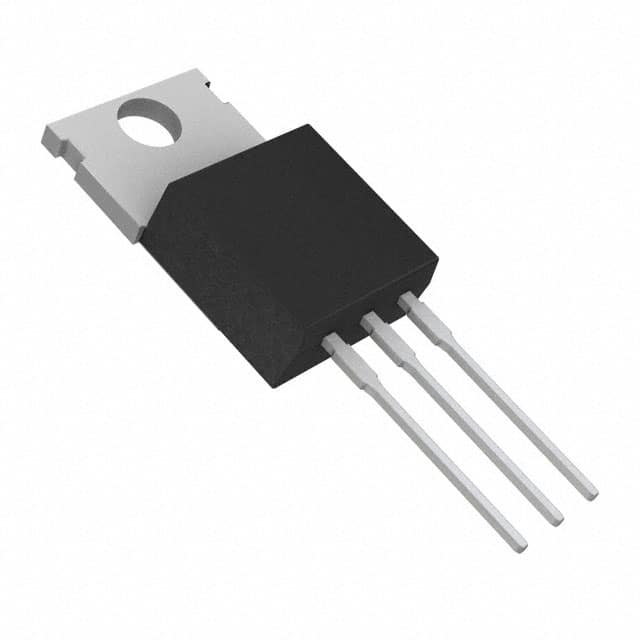TIP47G: Product Overview and Specifications
Introduction
The TIP47G is a power transistor belonging to the category of bipolar junction transistors (BJTs). This device is commonly used in various electronic applications due to its high power handling capabilities and reliability. In this entry, we will provide an overview of the TIP47G, including its basic information, specifications, pin configuration, functional features, advantages and disadvantages, working principles, application field plans, and alternative models.
Basic Information Overview
- Category: Bipolar Junction Transistor (BJT)
- Use: Power amplification and switching applications
- Characteristics: High power handling, low saturation voltage, and high current gain
- Package: TO-220AB
- Essence: NPN silicon epitaxial-base planar transistor
- Packaging/Quantity: Typically available in reels or tubes containing multiple units
Specifications
- Collector-Emitter Voltage (VCEO): 100V
- Collector-Base Voltage (VCBO): 100V
- Emitter-Base Voltage (VEBO): 5V
- Collector Current (IC): 10A
- Power Dissipation (PD): 40W
- Transition Frequency (fT): 3 MHz
- Operating Temperature Range: -65°C to 150°C
Detailed Pin Configuration
The TIP47G transistor has a standard TO-220AB package with three leads: 1. Collector (C): Connected to the positive supply voltage 2. Base (B): Controls the transistor's conductivity 3. Emitter (E): Connected to the ground or load
Functional Features
- High power amplification capability
- Fast switching speed
- Low saturation voltage
- Good thermal stability
Advantages and Disadvantages
Advantages
- High power handling capacity
- Suitable for high-current applications
- Low saturation voltage reduces power dissipation
Disadvantages
- Relatively lower switching speed compared to some alternative models
- Larger footprint due to the TO-220AB package
Working Principles
The TIP47G operates based on the principles of bipolar junction transistors. When a small current flows into the base terminal, it controls a larger current flow between the collector and emitter terminals. This allows the transistor to amplify signals or act as a switch in electronic circuits.
Detailed Application Field Plans
The TIP47G is commonly used in the following applications: - Audio amplifiers - Power supply circuits - Motor control systems - Voltage regulators - Switching circuits
Detailed and Complete Alternative Models
Some alternative models to the TIP47G include: - TIP42G - TIP122 - MJL21193 - 2N3055
In conclusion, the TIP47G is a versatile power transistor suitable for various high-power electronic applications. Its robust characteristics and wide operating temperature range make it a popular choice among electronic designers and hobbyists.
Word Count: 398
قم بإدراج 10 أسئلة وإجابات شائعة تتعلق بتطبيق TIP47G في الحلول التقنية
What is TIP47G?
- TIP47G is a type of power transistor commonly used in electronic circuits for amplification and switching applications.
What are the key specifications of TIP47G?
- The TIP47G typically has a collector current (IC) rating of 10A, a collector-emitter voltage (VCE) rating of 100V, and a power dissipation (Pd) rating of around 65W.
How is TIP47G used in technical solutions?
- TIP47G is often used in power supply circuits, motor control circuits, audio amplifiers, and other applications where high-power switching or amplification is required.
What are the typical operating conditions for TIP47G?
- The TIP47G is designed to operate within a temperature range of -65°C to 150°C and is suitable for use in various industrial and consumer electronic devices.
What are the common circuit configurations for TIP47G?
- TIP47G can be used in common emitter, common base, and common collector configurations depending on the specific application requirements.
Are there any important considerations when using TIP47G in a circuit?
- It's important to consider heat dissipation, proper biasing, and safe operating limits to ensure reliable performance and longevity of the transistor.
Can TIP47G be used in high-frequency applications?
- While TIP47G is not specifically designed for high-frequency applications, it can still be used in certain low to moderate frequency circuits with appropriate design considerations.
What are some alternative transistors to TIP47G?
- Alternatives to TIP47G include TIP42G, TIP41G, and other transistors with similar power ratings and characteristics.
How can TIP47G be protected from overcurrent and overvoltage conditions?
- Overcurrent and overvoltage protection can be implemented using external circuitry such as fuses, diodes, and current-limiting resistors in the overall system design.
Where can I find detailed application notes for using TIP47G in technical solutions?
- Detailed application notes for TIP47G can be found in the manufacturer's datasheet, technical reference manuals, and online resources provided by semiconductor companies and electronics forums.


